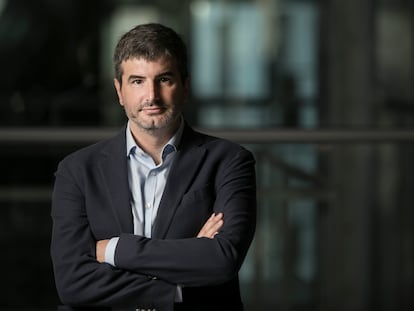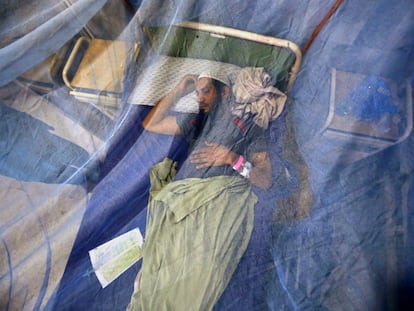Who was the woman who discovered a virus that exists in 95% of humans?
A new book delves into the story of Yvonne Barr, an Irish-born scientist who co-discovered the Epstein-Barr Virus, which increases the risk of developing several types of cancer
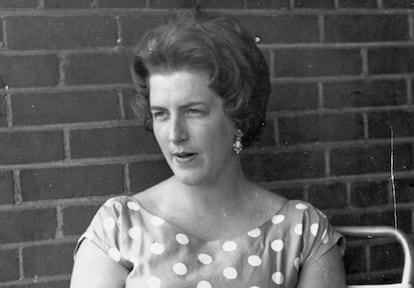
When Yvonne Balding died six years ago in Australia, the media didn’t pay a lot of attention. Almost nobody was aware that, when the private school teacher was unmarried (and going by her maiden name, Yvonne Barr) she had co-discovered the Epstein-Barr Virus - the culprit behind mono, multiple sclerosis (MS) and several tumors. Practically everyone carries this virus inside of them, as it infects about 95 out of every 100 people.
Barr died in Melbourne in 2016, after spending the second half of her life as a teacher in various private schools. Her daughter, Kirsten Balding, told EL PAÍS that her mother “hardly ever spoke about her earlier career as a virologist… I would love to write a book about that part of her life, but it would be very short because I don’t have much information!”
Barr’s time as a research assistant in the United Kingdom was short, but rewarding. During the 1960s, she worked alongside several Jewish scientists who had fled Nazism. According to historian Gregory Morgan - author of the book Cancer Virus Hunters: A History of Tumor Virology, released by John Hopkins University Press in August of this year - Barr “left the field of research, in part, because of her experience with sexism.”
The story behind the discovery of the Epstein-Barr Virus (EBV) begins during World War II. Military surgeon Denis Burkitt, a devoted Christian, was posted in the British colony of Uganda in 1943. After the war, he heard the call of God: he decided to stay put and work in a public hospital in Kampala.
In 1957, Burkitt was brought to a child patient with a severely swollen jaw. No clear diagnosis was made. But then, a few weeks later, the surgeon encountered a similar case. Unable to believe that this was a coincidence, he started going through the medical records of various Ugandan hospitals and ended up finding 38 cases of young boys with the same kind of swollen jaw. This painful condition was ultimately discovered to be caused by a malignant tumor. This tumor would end up being called “Burkitt lymphoma” - a type of non-Hodgkin lymphoma (NHL). NHL is a cancer of the lymphatic system.
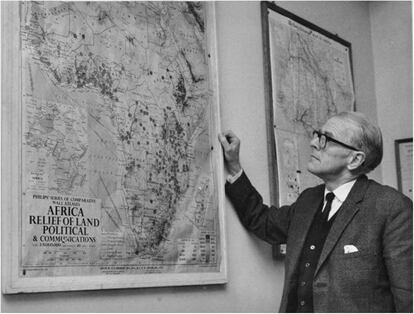
In 1961, Burkitt travelled to London to present his results at a conference being held at Middlesex Hospital. The British virologist Anthony Epstein was among the attendees. Fascinated by the discovery, he realized that these kinds of tumors didn’t exist in cooler climates. Perhaps, he thought, it had something to do with tropical environments. After the conference, he approached Burkitt to suggest that this cancer may be caused by a virus, transmitted by mosquitoes.
The two men began to collaborate. Burkitt would send medical samples taken from sick children in Uganda to Epstein by plane, so that he could analyze them in his London laboratory. For two years, Epstein injected the biopsied tissue into chicken eggs, mice and other types of human cells but no trace of a virus turned up.
At the end of 1963, Epstein contracted a new research assistant: Yvonne Barr, a 31-year-old Irishwoman, who had studied Zoology in Dublin and conducted research on leprosy and canine distemper. A few months later, Epstein used his microscope to find floating tumor cells in a recently-arrived set of biopsies from Ugandan children. He asked Barr to cultivate the cells, so that different treatments could be tested on them. She succeeded, managing to multiply the cells from a cancer that was afflicting a nine-year-old Ugandan girl.
When there were finally enough lymphoma cells growing in the lab, Epstein was finally able to examine them with a much more powerful electron microscope. It was a snowy February day in 1964. The microscopic image showed particles that the virologist immediately recognized as viruses from the herpes family. In Cancer Virus Hunters, Epstein recalls his feelings in an interview with Morgan: “I went out in the snow without a jacket or anything, just with the white lab coat… I walked around the building to calm down.”
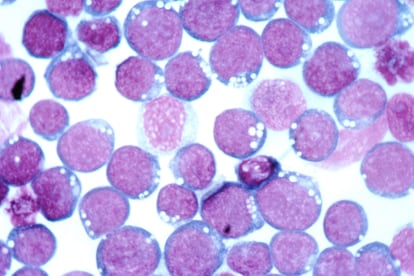
On March 28, 1964, Epstein, Barr and pathologist Bert Achong announced to the world that they had found viruses in Burkitt’s lymphoma cells.
It still had to be proven that the virus was indeed the cause of the cancer. Epstein contacted Gertrude and Werner Henle, married virologists from the Children’s Hospital of Philadelphia. The Henles detected the virus in 100% of African children with lymphoma but they found another surprise: 90% of healthy Americans also carried the virus.
While EBV is perfectly immune-controlled (or dormant) in the vast majority of infected individuals, a minority develop EBV-associated diseases.
In 1968, the French oncologist Guy de Thé set up an ambitious experiment to draw blood from more than 40,000 children in Uganda and waited a few years to analyze the peculiarities of those who developed Burkitt’s lymphoma. However, the plan, which was already complex, ran into an unexpected problem: in 1971, Idi Amin seized power in a coup, ushering in an eight-year-long reign of terror that would see about 300,000 Ugandans murdered or disappeared. Yet, despite the turmoil, Amin left the French experiment alone. The results would ultimately show that, of the 14 children from the initial test pool diagnosed with lymphoma, EBV was the culprit. Malaria - a parasitic disease transmitted by mosquitoes - was proven to be facilitating the potency of the virus, which is why Burkitt’s lymphoma is concentrated in Africa, the continent home to the highest transmission rates.
In 1965, Yvonne Barr married an Australian named Stuart Balding. She moved with him to Melbourne that same year. Her daughter, Kirsten, believes she did postdoctoral research there, at Monash University, but doesn’t know in which lab.
“She told me it was a men’s club. I got the impression that she had trouble getting a permanent position, so she switched to teaching.”
Yvonne Barr dedicated the rest of her professional life to teaching physics, chemistry, biology and mathematics in different private schools. “She was a very outgoing person and loved helping people, so I suspect teaching was more suited to her than research. She never regretted leaving science; she considered it a difficult profession,” her daughter explained.
Alberto Ascherio - a 68-year-old epidemiologist from Harvard University - is one of the world’s leading experts on EBV. However, he was never able to speak to Yvonne Barr: “She left science and her name unknown.”
Ascherio’s team began tracking some 10 million US military personnel two decades ago. The results of the study, published this year, have shown that the risk of multiple sclerosis is multiplied by 32 following infection with EBV.
The epidemiologist recalls that the Irishwoman sent a short video to a scientific conference held in Oxford in 2014, to commemorate a half-century since the discovery of the virus.
He was one of the experts gathered to hear her recorded remarks: “Hello! Greetings from Melbourne, Australia. My name is Yvonne Balding and I am the Barr of the Epstein-Barr Virus. Barr was my maiden name!”
In his book, Morgan highlights a surprising figure: 20% of human tumors are caused by viruses. He notes that the scientists who revealed these unexpected links have saved “perhaps millions of lives.” Epstein and Barr were the first.
Epstein continued to conduct research and was knighted in 1991. In 2021, the scientific community came together to celebrate his 100th birthday. Barr, on the other hand, lived a quieter life, teaching, travelling with her family, taking walks in the countryside and birdwatching. “She loved crafts, like knitting,” her daughter recalled.
Despite her penchant for anonymity, her family made sure that her tombstone would commemorate what she did for humanity. It reads: “Dr. Yvonne Margaret Balding, born Barr. Co-discoverer of the Epstein-Barr Virus.”

